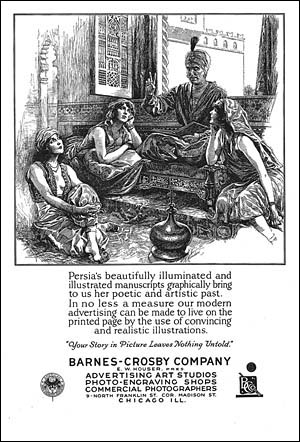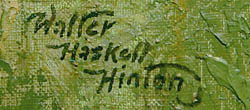

Homepage
![]()
In business
By the time Walter Haskell Hinton began his career in 1905, the advertising industry had already been self-consciously modernizing for over 10 years. One of the biggest changes in this period was that advertising began to feature big, attractive pictures of products, making them look exciting, rather than wasting space on fields of boring text.
New advancements in art reproduction using photographic technology, faster presses, and a shift to magazines relying on advertising revenue rather than subscriptions meant that more ads were produced. Also, more ads were in color, and companies began to recognize the advantages of eye-catching and consistent packaging and logos. Commercial artists (the present-day term “graphic designer” was not used until after the Second World War) were responsible for designing how products appeared on the shelf and in ads. Walter Haskell Hinton was trained not just in painting, but also in lettering and layout.
In his own words in a taped interview of 1976, Hinton explained, “If you can bring in an interesting story you sort of hypnotize the reader to the fact he’s being led into an advertising proposition, painlessly. So you get this interesting side, and then you can associate the product that you’re trying to push with this. So that’s the way advertising works.”
In his early years, Hinton worked in Milwaukee, Chicago, New York, and Philadelphia, returning to Chicago to take a full-time position with the Barnes & Crosby ad agency, where he stayed until the Depression forced it to close. Up to that point he illustrated anything that was asked of him. When he became self-employed in 1933, he began to specialize in the outdoor, Western, and nature themes that had long interested him personally.
It was his practice to make sketches on the spot when meeting with clients. The ideas came to him rapidly and his ability to show people what he was thinking right then and there often won him the job. Brands Hinton worked on include Dutch Cleeanser, Steinway Pianos, Indian Motorcycles, Pabst Beer, and David Adler Clothing.
While in Philadelphia, Hinton developed the tobacco advertising character Velvet Joe for Liggett & Myers. Although he never received credit, it was Hinton who suggested Joe should resemble Mark Twain.
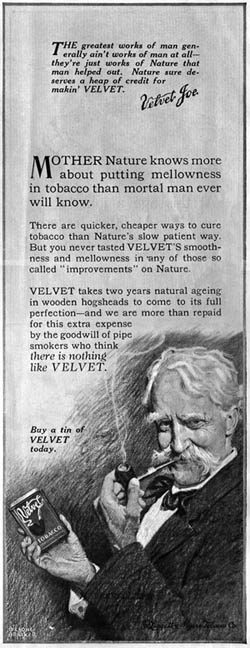
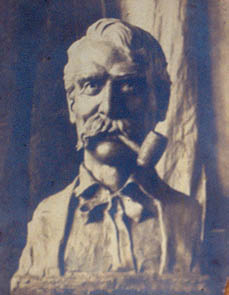
This illustration was executed by M. Leone Bracker using Hinton’s designs, including this bust sculpted by Hinton in 1917. Hinton was probably too unknown at the time for the tobacco company (Liggett and Myers) to let him produce the final artwork himself. He said that working on this campaign is what made him start smoking a pipe.
Later in his career, Hinton was employed by the equipment manufacturer Austin-Western to produce a series highlighting the use of big earth-moving machines in road-building. His early study of landscape painting was instrumental in creating the majestic backgrounds.
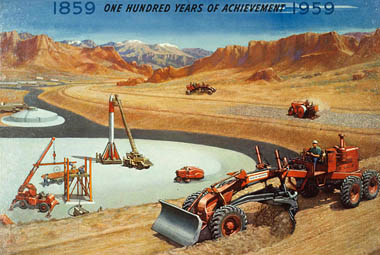
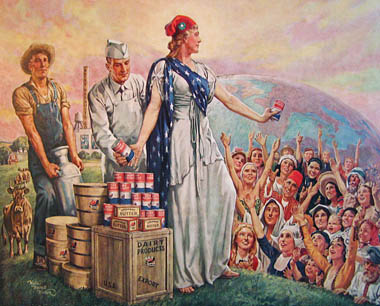
Columbia, a kind of female Uncle Sam, distributes
American milk to the world. She wears the Phrygian Cap of Liberty.
Hinton worked at Barnes & Crosby throughout the 1920s.
Indian Motorcycle ad, circa 1918.
Hinton''s experience illustrating Western pulp magazines was put to use here for Orange Crush (1930s).

Biography

Outdoors magazines

Pulps & Westerns

Farm magazines

John Deere

Fairmont Railways

Washington Nat'l Ins.

Advertising

Native Americans

Calendars & prints

Puzzles

